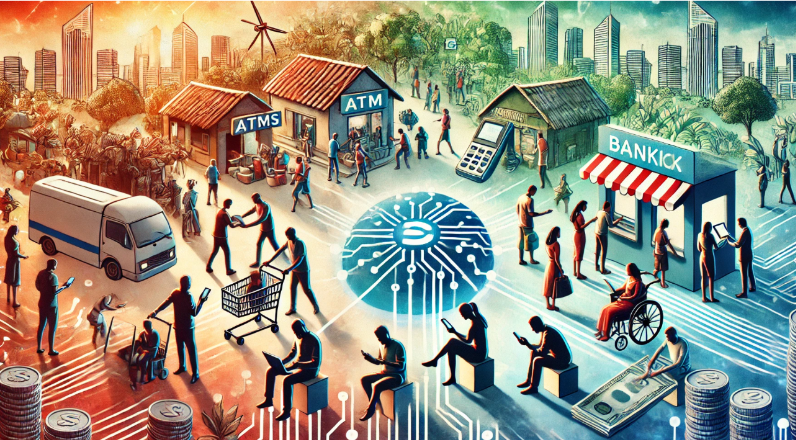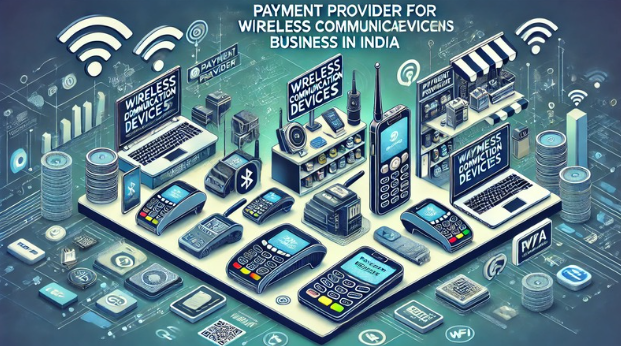AUTHOR-ELIZA FERNZ
Introduction
India, with its burgeoning digital economy, has emerged as one of the most vibrant markets for payment providers and wireless communication devices. The country’s rapid technological advancements, growing mobile penetration, and a youthful population are key factors contributing to the expansion of both these sectors. Digital payments and wireless devices have transformed transactions and created new business opportunities. This blog explores the growth of payment providers and wireless devices in India and their impact on businesses and consumers.

The Evolution of Digital Payments in India
The digital payment landscape in India has witnessed tremendous growth over the past decade, primarily driven by government initiatives such as Digital India and Make in India, as well as the increasing adoption of smartphones and internet services. Today, India is one of the world’s largest markets for mobile payments, with millions of transactions taking place every day.
Government Initiatives and Policy Support

The government has played a pivotal role in promoting digital payments(1) in India. Initiatives like Pradhan Mantri Jan Dhan Yojana (PMJDY) and Jan Dhan-Aadhaar-Mobile (JAM) have enabled greater financial inclusion, while the introduction of the Goods and Services Tax (GST) and the Unified Payments Interface (UPI) have simplified transactions for businesses and consumers alike.
The Rise of Wireless Communication Devices
Wireless communication devices, particularly smartphones, have played a critical role in the adoption of digital payments in India. As a result, they have significantly contributed to the widespread use of cashless transactions. The country has one of the largest mobile phone user bases globally, with over 1.1 billion mobile subscribers as of 2024. The widespread use of smartphones has driven the adoption of digital payment systems, as most payment apps(2) and mobile wallets are designed for easy access on smartphones.
Affordable Smartphones: Catalysts for Change
India has witnessed a significant drop in the cost of smartphones over the past few years. Brands like Xiaomi, Realme, and Samsung offer feature-rich smartphones at affordable prices, making it possible for millions of Indians to access mobile internet and participate in digital payments. Affordable smartphones have driven mobile payment adoption(3) by giving more users access to payment apps and digital wallets.
Synergy Between Payment Providers and Wireless Communication Devices
The convergence of payment providers and wireless communication devices has created a perfect storm for businesses in India. The widespread use of smartphones and mobile payment apps has, therefore, driven growth in e-commerce, retail, transportation, and hospitality industries. As a result, these sectors have experienced significant expansion and innovation.
Empowering Small Businesses
For small businesses in India, the combination of payment solutions(4) and wireless communication devices has been a game-changer. The ease of using mobile wallets and QR code payments has eliminated the need for cash transactions, providing businesses with a more secure, efficient, and cost-effective way to handle payments. With low transaction fees and quick settlement times, Digital payments have become the preferred transaction method for small vendors, particularly in urban and semi-urban areas.
Driving Financial Inclusion

The integration of payment solutions with wireless communication devices has significantly contributed to financial inclusion in India. According to reports, digital transactions have allowed previously unbanked populations, particularly in rural areas, to access financial services. Wireless communication devices, such as smartphones, have helped bridge the gap, enabling individuals to perform transactions, transfer money, and even access government subsidies without the need for a physical bank branch.
Challenges and Opportunities
Despite the impressive growth of payment providers and wireless communication devices(5), the Indian market does face certain challenges. Cybersecurity remains a major concern, as the increasing number of digital transactions makes users more vulnerable to fraud and identity theft. Payment providers must invest in strong security measures, such as encryption, biometric authentication, and fraud detection, to build user trust.
Conclusion
The intersection of payment providers and wireless communication devices in India has created an exciting business opportunity that is transforming industries, empowering consumers, and enhancing financial inclusion. As India continues to embrace digital transformation, the future of payments and wireless communication devices looks bright. Businesses must adapt to the evolving landscape, using these technologies to stay competitive and provide seamless, secure, and efficient payment solutions.
FAQs
1. What is the role of payment providers in India?
Payment providers facilitate digital transactions by offering platforms and services that enable secure payments through methods like credit cards, debit cards, UPI, wallets, and other digital payment systems.
2. How are wireless communication devices used in payment processing?
Wireless communication devices, such as POS (Point of Sale) machines, mobile devices, and QR code scanners, enable businesses to accept payments wirelessly, improving efficiency and customer convenience.
3. What are the popular wireless communication devices for payments in India?
Common devices include mobile POS terminals, NFC-enabled cards, QR code-based systems, and smartphones with payment apps like Google Pay and Paytm.
4. What are the challenges faced by payment providers in India?
Some challenges include internet connectivity issues in rural areas, security concerns, regulatory compliance, and ensuring a smooth user experience across different devices and platforms.
5. How has the demand for wireless payment solutions grown in India?
With the rise of digital India, increased smartphone penetration, and the government’s push for cashless transactions, the demand for wireless payment solutions has seen significant growth.
6. What are the regulations governing payment providers in India?
The Reserve Bank of India (RBI) and the Ministry of Electronics and Information Technology (MeitY) regulate digital payment services, ensuring security, privacy, and consumer protection

